Passive Radon System Troubleshooting
If you have a pipe marked "RADON" in your home, you probably have a passive radon system. The pipe is installed in the floor of the basement into gravel or a Tee fitting so air can move easily through the pipe to the roof. The pipe is usually run from the basement to the attic. At times even an electrical outlet is installed by the pipe in the attic. Here are the steps to install a radon fan on your passive radon system...
Follow these 3 easy steps:
1. Do a radon test first to make sure you need fan. Some passive systems are effective year round and don't need a fan. Doing a test in midwinter or a long term test is advisable since radon levels are highest in cold weather. If your levels are above 4pCi/L or even above 2pCi/L move on to step 2.
2. Find your radon pipe
in your attic in the attic run out the roof, then cut out about 12" piece of pipe out the vertical section heading up to the roof. Before cutting make sure it's the radon pipe and not a plumbing vent! We suggest the Radonaway RP145 for most passive radon systems.
3. Install your fan on the pipe with the appropriate size rubber couplings. If the pipe is run out the roof, simply install the fan using two rubber couplings and you are done. If the pipe is not run out the roof, finish the run of pipe out the roof using a pipe flashing. Here is a link to pipe flashings in the store for three inch and four inch pipe.
After the fan is installed, plug it in and you should be done. A retest is recommend to be sure the system is mitigating the radon sufficiently.
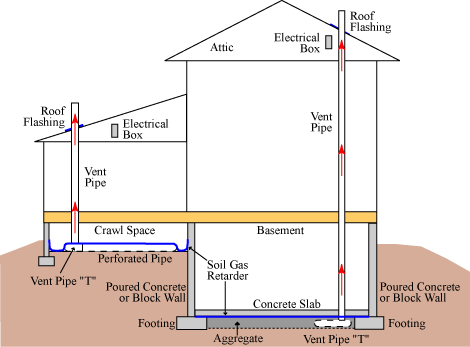
These systems work great if the system is installed correctly, but sadly this is isn't always the case. The problems usually involves what was done under the basement floor or with incorrectly run pipe. What to look for....
Is My Passive Radon System Working?
The first indication will be that the airflow is very low or nonexistent. This can be determined by the reading on the U-tube Manometer. For example with the RP145 if the manometer is reading above 1.5 the system is moving very little air and there is possibly a problem. How could this be?
The problem could be that those installing your passive system did not leave a void space or a cavity to pull air from. We have seen many cases where the pipe is just shoved into sand. This won't work with any size fan!
In the example below, the manometer was reading 2.2 after installing the fan, again this is way too high.
So don't panic and call a professional just yet...you can try this first.
Cut the pipe with a hand saw about 12 " off the floor and use a flashlight to inspect the bottom of the pipe.
As you can see in the picture sent from a homeowner we helped, the pipe does not have a suction pit to draw air from. In fact the dirt and gravel is completely plugging the bottom of the pipe. This will severely limit the amount of air the fan can move.
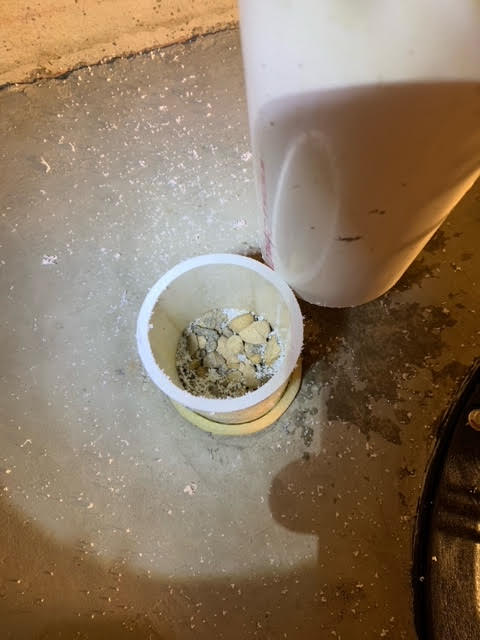 The bottom of this passive system was completely filled with gravel and sand.
The bottom of this passive system was completely filled with gravel and sand.Using a vacuum you should be able to suck out a few gallons of dirt and gravel. As you can see in the photo below, after using a vacuum to remove the material, there was a PVC tee installed below the floor. This can really make all the difference in making your active system effective in lowering the radon level.
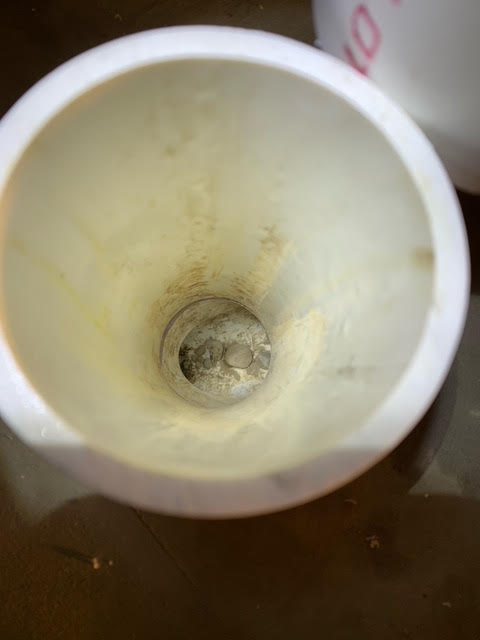 The pipe is now cleaned out out by using a shop vac.
The pipe is now cleaned out out by using a shop vac.After cutting the pipe and cleaning the material with a vacuum, the manometer reading dropped to 1.0, which is ideal for the fan he was using. (To find out what your manometer should be reading for your type of fan please watch our YouTube video Installing And Understanding Radon Mitigation System Manometer)
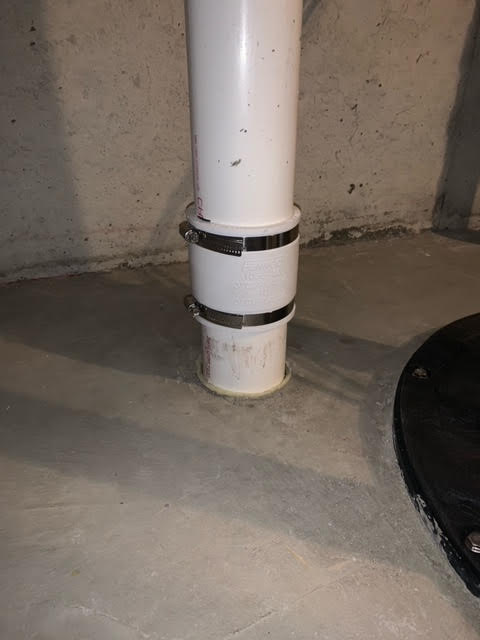
The end result was not only the fan moving a lot more air which helps with lowering radon levels, but it also helps to prolong the fans life. Proper airflow helps with the cooling of the fan.
So after completing the work you can use a rubber coupling to reconnect your cut pipe.
Another potential issue...
Occasionaly we have found that a trap has been installed in the pipe system. If this fills with condensation then the fan can't move air either. The picture below is an example of a trap. An area like this will fill with condensation and render the radon system inoperable or no air flow as well. This area needed to be replumbed to allow the condensation to drain back into the floor. This small amount of water is not a problem nor will it cause a flood.
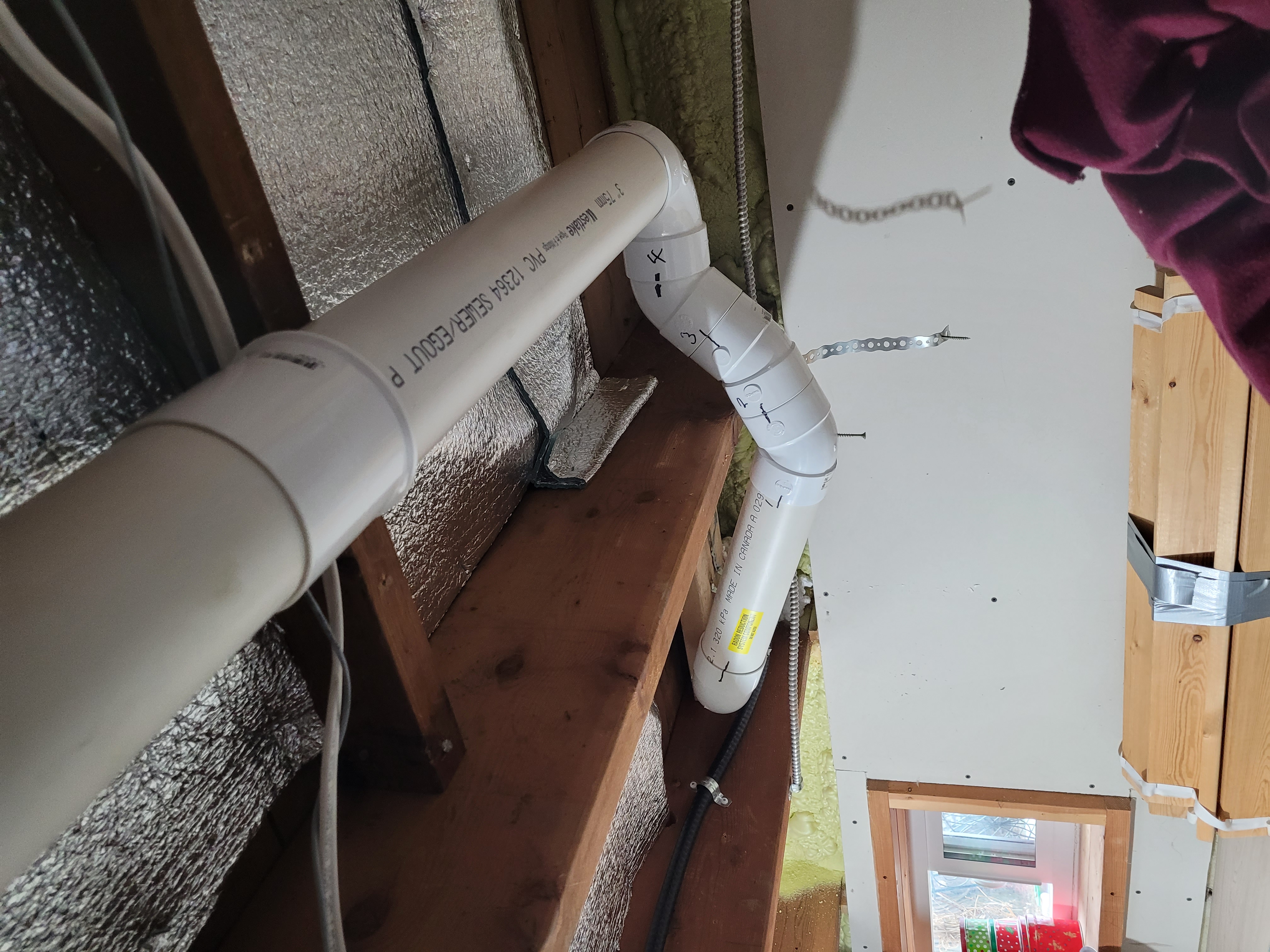 Water trap in radon piping.
Water trap in radon piping.

New! Comments
Have your say about what you just read! Leave me a comment in the box below.